For over a decade now, Drake has had an unrivaled position at the forefront of popular culture, not by adhering to one formula but by fluidly moving across genres including rap and R&B, and even dancing into dancehall and afrobeats. His distinction lies not merely in achieving commercial success, but also in combining emotional vulnerability with broad appeal.
Instead of following trends, he tends to create them, shaping the sound of a generation. Since his breakthrough in 2009 with So Far Gone, Drake has repeatedly pushed the limits of hip-hop, turning introspection, heartbreak, and late-night admissions into chart-topping anthems. Few artists have been able to do this consistently and remain at the top globally.
Drake's adaptability isn't a stylistic preference, it is a strategy that has kept him atop the beat in a constantly shifting musical culture. Dipping his toes into UK drill on War or reaching for a melodic touch on Passionfruit, he coasted through without sacrificing his signature internal monologue voice.
His collaborations know no bounds, traveling continents and genres to lure talent from all points of the earth, and that has broadened his scope and his base.
Aside from the music itself, Drake's presence on social media, fashion, and even sports, has made him more than an artist. He is an outright global brand. His flexibility without losing the roots of personal storytelling has enabled him to reach out intimately to listeners of multiple generations.
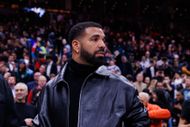
Before going into his musical journey, it is important to recognize how thoroughly Drake has permeated the tone and sound of the modern pop culture experience. From the way musicians release surprise albums to the explosion of moody, ambient beats flooding playlists, his influence is everywhere.
Drake made introspection into a flex, and emotional vulnerability was made a mainstream rap staple. His success is not so much about platinum plaques and hit records, it is about the way his style has served as a blueprint for a generation of artists struggling to balance honesty and appeal.
Degrassi sparked Drake's artistic evolution
Before becoming a master of world music charts, Drake's own childhood life had been filled with ambition and resolve. Aubrey Drake Graham was born on October 24, 1986, in Toronto, Canada. He had an out-of-the-ordinary childhood influenced by a blend of cultures and ambitions, and his mother, Sandi, brought him up after his parents had parted ways.
Drake was raised in Forest Hill, a more affluent postal code of Toronto, amidst financial hardship in contrast to neighborhood life. His father, Dennis Graham, introduced Drake to southern musical traditions.
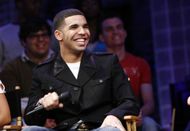
Instead of being a rapper first, Drake first came into the limelight in 2001 when he was cast as Jimmy Brooks on teen soap Degrassi: The Next Generation. He played a high school basketball star who becomes wheelchair-bound because of an on-court shooting accident, and his role pleased the audience and put him in the limelight.
But backstage is where he started cultivating his musical skills, rapping and making beats in between. It was this ping-pong between performing and developing hip-hop love that offered a platform for a crossover few have been willing to try: From teen TV to hip-hop royalty.
Drake's journey to success
Drake's path to hip-hop superstardom was non-traditional. Jimmy Brooks, the wheelchair-bound classmate on Degrassi: The Next Generation, didn't have much creative possibility he had to play with during the early stages of his acting career.
Swamped by the role, he turned to music, self-releasing his mixtapes as a means of loosening himself from the negative connotations of his TV image. His initial two albums, Room for Improvement (2006) and Comeback Season (2007), were initial experiments with combining rapping with melodies, an initial sign of the songs he would eventually own.
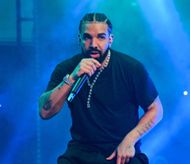
But So Far Gone (2009) revolutionized everything for the rapper. The mixtape propelled him to international stardom, and the track Best I Ever Had was thrust into the limelight, receiving enormous hype. The one solitary hit single not only earned him a devoted fan base but also made him a subject of attention for Lil Wayne, who soon invited him to join the camp of Young Money.
It wasn't just an idea, it was the creation of the rapper as an unstoppable force to be reckoned with in the musical world, fusing sensitivity and boasting into a product that reimagined the face of the genre.
Drake's rise in redefining hip-hop and blurring genre boundaries
Drake's musical journey started back in 2010 when he released his much-anticipated debut album, Thank Me Later. And as expected, the album did phenomenally well. It debuted at number one on the Billboard 200 and even gave us hits like Over and Find Your Love. From the very beginning, Drake was making it clear that he was not just an ordinary rapper.
Unlike his contemporaries, he blended contemplative lyrics with a melodic flow unlike anything the industry had seen before. He is now considered the new face of hip-hop and is surging in popularity. Throughout the years, Drake's reign has only increased.
In 2011, he released Take Care, which won him his first Grammy and solidified his status in the rap and R&B industry. The tracklist contained a darker, more reflective version of him. He explored atmospheric textures and celebrity, romance, and loneliness.
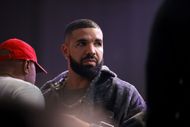
On 2013's Nothing Was The Same, the rapper offered a pop-tinged sound that effortlessly blended R&B and rap. It was something that set him apart. Started From the Bottom and Hold On, We're Going Home.
While declared cassette classics, Started From the Bottom quickly became a cultural anthem, and Hold On, We're Going Home showcased his range beyond hardcore rap, displaying his flexibility, appealing to both rap enthusiasts and mainstream fans.
Through these compositions, Drake not only caught the zeitgeist of his period but also set new benchmarks for how genre fusion could be employed to generate anthems for the public.
Drake's Views and its impact on music and culture
By 2016, Drake had peaked at an all-time high of international popularity with Views. Its lead single, One Dance, was number one in the charts, sweeping the airwaves around the globe and cementing its status as all-time great recordings.
What was so remarkable about Views wasn't the album itself; it was how it observed he develop from rising Canadian star to global phenomenon whose impact extended far and wide beyond hip-hop. By this point, Drake's influence had reached into all sorts of nooks and crannies of mainstream culture.
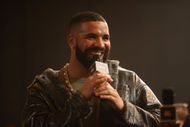
His adoption of the Toronto Raptors allowed him to build his brand and the city's on the global stage. Expansion of his OVO (October's Very Own) label demonstrated further his entrepreneurial spirit, combining music, fashion, and lifestyle in a manner that few other programs had been able to achieve.
Apart from his music, he was increasingly becoming a three-dimensional character, impacting not only the music community but also fashion, sport, and the overall cultural environment.
Drake's Scorpion era proved his versatility
With the defeat of Scorpion in 2018, Drake once again made a gargantuan step towards solidifying his place in music history. The album mirrored his talent as an artist since it benefited from his prowess as a rapper and his prowess as a singer too, showcasing him in two extremes: one propelled by strong-remitting rap verses and another by steamy R&B beats.
Tracks such as God's Plan and In My Feelings not only turned into anthems but also demonstrated to him the extent to which he could do well with commercially viable and introspective songs. The album was evidence of growing maturity and confidence in his work as well as insight into the complexity of his life and celebrity.
The ease with which Drake has evolved while not compromising on his true voice is one of the most decisive factors in his success.
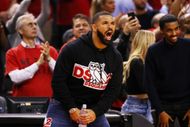
Repeatedly challenging genre barriers through combining rap and pop, R&B, as well as dancehall, this keeps him among the top trendsetters. The fact that he has chosen to speak openly about love, fame, as well as weakness has made it possible for music to be marketed to a general audience.
In an era when it becomes increasingly challenging to remain pertinent, Drake has continually shown that his hybridizing and multitalent aspects are temporary aberrations, not fleeting fashions. These are the master tactics behind his long-standing reign atop the music charts.
Drake's groundbreaking journey from 2019 to the present
From 2019 to 2021, Drake was on top with chart-dominating releases and record-breaking achievements. In December 2019, he released the UK drill-sounding War, then the No. 1 viral hit Toosie Slide in April 2020. Then he returned with Dark Lane Demo Tapes, a leak-and-new-music tape that includes Future, Chris Brown, and more, which launched in the U.S. at No. 2 and in the U.K. at No.1.
He released his sixth album after that with Laugh Now Cry Later ft. Lil Durk, which reached No. 2 and was nominated for a Grammy.
Following an injury hiatus, Drake put out Scary Hours 2 in March 2021, the first artist ever to release three songs in the top three on the Hot 100. He was then declared Billboard's Artist of the Decade. Certified Lover Boy came out in September 2021, dominating the charts with nine of its songs in the top 10 of the Hot 100 and Way 2 Sexy being his ninth No. 1.

After receiving Grammy nods, he withdrew his work from contention. He closed the year as Spotify's highest-ranked rapper and most-heard artist in America with 8.6 billion streams.
From 2022 to 2025, Drake cemented his hold on music and culture through best-selling albums, celebrity appearances, and front-page shots. In 2022, he was the fourth wealthiest rapper on the Forbes list, topped 7.9 billion streams, of all pre-1980 records, and sought the tenth time with Wait for U. He released Honestly, Nevermind, his 11th No.1 album.
He also eclipsed The Beatles' record in 2022 for the most top-five Billboard Hot 100 songs, previously the record holder. Even after he accumulated many Grammy nominations, he once more retracted his submissions and had a stranglehold on Spotify's all-time streaming charts.
Drake released Her Loss with 21 Savage in 2023, which launched at No. 1 with eight top-ten Hot 100 singles. He was awarded four Grammys for songwriting with Beyoncé's Renaissance before releasing For All the Dogs, which came out with the hit Slime You Out featuring SZA.
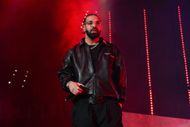
The album topped the Billboard 200. In 2024, he engaged in a bitter rap war with Kendrick Lamar, releasing diss tracks like Push Ups, Family Matters, and The Heart Part 6. His momentum, however, persisted as viral guest verses like Wah Gwan Delilah and surprise cameo roles like announcing a new collaborative album with PartyNextDoor.
Drake teamed up with PartyNextDoor in January 2025 to release $ome $exy $ongs 4 U, which debuted at No.1, along with Jay-Z and Taylor Swift for the most solo Billboard 200 No.1 albums. And now, Drake has just released Nokia, from his album $ome $exy $ongs 4 U with PARTYNEXTDOOR, and guess what! the song becomes one of the most talked-about numbers.
He was the fastest-selling Wireless Festival performer, by headlining each day of the three-day festival, and Toronto's official host and artist for the 2026 FIFA World Cup.
Drake's cultural impact and legacy
Drake's impact stretches well beyond the sale of records and chart activity, he has redirected the sound and potential of hip-hop today. Rather than stick to tired old rap conventions, he exposed himself and added in melody and emotion, fusing rap and R&B in a manner that redirected the future of the genre and pushed a generation of creators to follow.
His rise not only placed Toronto's music industry on the world map but also set the precedent for how artists from outside of the U.S. could go mainstream.
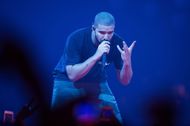
Drake's influence extends way beyond music as well, he has left his indelible stamp on fashion, sports culture, and media, creating a multifaceted brand that spans industries. With streaming, he is not just keeping up, he is ahead of the curve. With historical numbers at Apple Music and Spotify, Drake has been a digital-era giant, consistently gauging listeners around the world.
Drake's path from a teen actor in Toronto to an international music giant is a testament to his growth, perseverance, and unparalleled versatility. Merging styles, shattering records, and influencing culture in the process, he's built a legacy that transcends music, making him one of the most impactful artists of his generation.
Keep reading SoapCentral for more informative content!
Also Read: The evolution of Sabrina Carpenter: A look at her music career
